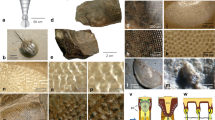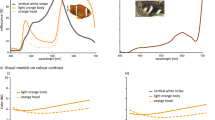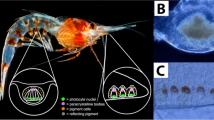Abstract
IT is generally stated in standard reference and text-books of zoology that, in species where such bodies are present, the terminal pigment bodies (or ‘eye spots’) are necessary for light orientation. In two early studies, Romanes1, in the “starfish”, and Preyer2, in Asterina gibbosa and Asterias glacialis, found that these spots were essential in the positive light responses of these starfish and that without these pigment bodies such responses were lacking. On the other hand, several contradictory reports have also appeared3–5 which emphatically state that positively phototropic responses persist even after the excision of all the eye spots of each ray of Echinaster crassispina, Pentaceros reticulatus and Asterias forbesi. I therefore undertook to check the role of these pigment bodies in light orientation of the common starfish of the North Atlantic coast of North America south of Maine, A. forbesi, as well as to establish a possible chemical basis for light perception.
This is a preview of subscription content, access via your institution
Access options
Subscribe to this journal
Receive 51 print issues and online access
$199.00 per year
only $3.90 per issue
Buy this article
- Purchase on Springer Link
- Instant access to full article PDF
Prices may be subject to local taxes which are calculated during checkout
Similar content being viewed by others
References
Romanes, G. J., “Jelly-fish, Star-fish and Sea-urchins” (D. Appleton Co., New York, 1885).
Preyer, W., Mitteil. aus der Zool. Sta. zu Neapel, 7, 191 (1886–7).
Cowles, R. P., Carnegie Inst. Wash. Papers Tortugas Lab., 3, 95 (1911).
Cowles, R. P., Johns Hopkins Univ. Circ., 232, 3 (1911).
MacCurdy, H., Science, 38, 98 (1913).
Author information
Authors and Affiliations
Rights and permissions
About this article
Cite this article
ROCKSTEIN, M. Role of the Terminal Pigment Spots of the Starfish, Asterias forbesi, in Light Orientation. Nature 177, 341–342 (1956). https://doi.org/10.1038/177341a0
Issue Date:
DOI: https://doi.org/10.1038/177341a0
This article is cited by
-
Crown-of-thorns starfish have true image forming vision
Frontiers in Zoology (2016)
Comments
By submitting a comment you agree to abide by our Terms and Community Guidelines. If you find something abusive or that does not comply with our terms or guidelines please flag it as inappropriate.



